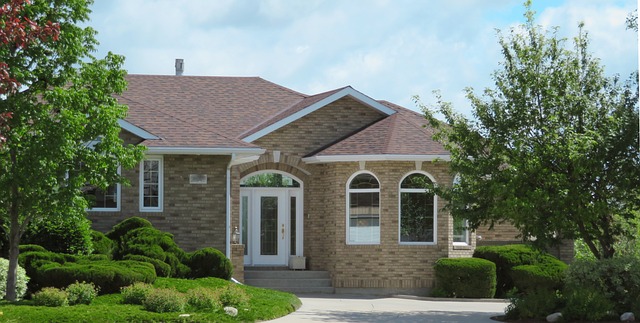Green roofs and living roofs are transforming traditional rooftops into vibrant ecosystems with numerous environmental benefits. They offer insulation, mitigate the urban heat island effect, enhance air quality, promote biodiversity, filter pollutants, and absorb carbon dioxide. Installation involves structural assessment, preparation, layering specific materials, and irrigation systems. Choosing sustainable materials ensures durability, aesthetics, and alignment with green goals. Regular maintenance, including consistent watering and seasonal inspections, maximizes environmental benefits and longevity of these innovative urban green roofs and rooftop gardens, contributing to energy-efficient spaces that support local wildlife habitats.
“Elevate your space with a transformative rooftop garden—a harmonious blend of nature and urban living. This comprehensive guide delves into the world of green roofs, exploring their myriad benefits for both the environment and your home. From understanding the fundamentals of this eco-friendly trend to mastering the installation process, we’ll navigate you through every step. Learn about sustainable materials, effective maintenance strategies, and discover how these living roofs can reduce energy costs. Embrace the power of green roofing technology and unlock the potential of an urban green roof.”
- Understanding Green Roofs and Their Benefits
- The Installation Process: Step-by-Step Guide
- Choosing the Right Materials for Your Rooftop Garden
- Maintenance Tips for a Thriving Sustainable Roof System
Understanding Green Roofs and Their Benefits
Green roofs, also known as living roofs or rooftop gardens, are rapidly gaining popularity as an eco-friendly and sustainable roofing solution. This innovative approach involves transforming traditional rooftops into lush green spaces that offer a plethora of benefits for both buildings and their surrounding environments. A green roof is essentially a layer of vegetation and soil placed on top of a structure, providing insulation, reducing the urban heat island effect, and improving air quality.
The installation of these sustainable roof systems contributes to several environmental advantages. They act as natural insulators, helping to regulate indoor temperatures and reduce energy consumption for heating and cooling. Additionally, green roofing technology promotes biodiversity by creating habitats for local wildlife, especially in urban areas where natural spaces are scarce. By integrating plants into the built environment, these roofs also help filter pollutants from the air, absorbing carbon dioxide and releasing oxygen, thus improving overall air quality. Furthermore, they can extend the lifespan of a roof structure, protecting it from harsh weather conditions and providing a long-term, eco-friendly solution for building owners.
The Installation Process: Step-by-Step Guide
The process of installing a rooftop garden involves several meticulous steps to ensure a sustainable and vibrant green oasis above your head. It begins with a thorough assessment of the roof structure, ensuring it can support the additional weight of the garden components. Next, professionals prepare the roof by installing a waterproof membrane and drainage layers, creating a robust foundation for the eco-friendly roof garden. This initial phase is crucial for preventing water damage and ensuring the longevity of your green roof.
Once the groundwork is complete, the installation team begins layering specific materials tailored to your chosen design. This includes placing a growing medium, often a soilless mix, followed by careful placement of plants suitable for the local climate and your preferred aesthetic. Drainage systems are strategically integrated to manage water runoff, while irrigation systems ensure the garden receives adequate hydration. Finally, a protective layer is added, completing the sustainable roof system and enabling your rooftop garden to thrive as an urban green roof, contributing to energy-saving solutions and enhancing the environmental roofing landscape.
Choosing the Right Materials for Your Rooftop Garden
When designing a rooftop garden, selecting the appropriate materials is paramount to ensure its longevity and aesthetic appeal. A key consideration is transitioning from traditional roofing materials to those suited for a green roof. Many options are available in the market, including specialized growing mediums, drought-resistant plants, and lightweight structural components that can bear the weight of the new vegetation. These choices not only enhance the garden’s beauty but also contribute to environmental sustainability, as they reduce the urban heat island effect and provide insulation, mitigating energy consumption.
For an eco-friendly roof garden, choose materials that align with your sustainable goals. Modern green roofing technology offers a range of solutions, from intensive systems capable of supporting a diverse plant life to extensive systems that are lighter and more affordable. Consider the structural integrity of your roof and select materials that offer long-term durability, minimizing future maintenance costs. Environmental roofing solutions can also enhance air quality, improve water management, and provide habitats for local wildlife, making your rooftop garden an asset that benefits both you and the community.
Maintenance Tips for a Thriving Sustainable Roof System
Maintaining a rooftop garden or living roof is an essential aspect of ensuring its longevity and environmental benefits. Regular care will help your sustainable roof system thrive, contributing to a greener and more energy-efficient urban space. One key tip is to establish a consistent watering routine, especially during dry periods. The right amount of hydration promotes plant health while conserving water resources—a crucial factor in eco-friendly roofing.
Additionally, seasonal inspections are vital. Look for signs of damage, such as missing plants or damaged containers, and address issues promptly. Weeding and monitoring pest populations will also prevent invasive species from taking over. By implementing these simple yet effective maintenance practices, you contribute to the overall health of your green roof, making it a beautiful and environmentally beneficial addition to any urban setting.
Rooftop gardens are not just a trend but an environmentally conscious choice for urban spaces. By following the comprehensive guide on installation and maintenance outlined in this article, you can transform your rooftop into a vibrant living ecosystem that offers numerous benefits, from improved insulation to enhanced aesthetics. With the right materials and care, your green roof will contribute to a more sustainable future while adding value to your property. Embrace the power of nature and explore the potential of eco-friendly roofing solutions today.
